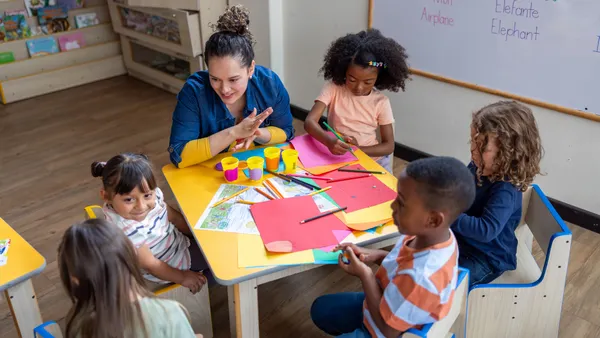Dive Brief:
- Amid the transition from classrooms centered around rote memorization and rows of desks facing an educator who serves as a "sage on the stage," the question of what a modern learning environment looks like persists for many in the field, as EdTech: Focus on K-12 details.
- Alongside a greater focus on critical thinking and problem-solving skills, modern learning environments incorporate technology at all levels of learning, with many districts embracing 1:1 and bring-your-own device strategies.
- The modern learning environment has also trended toward flexible seating arrangements that encourage more collaboration and peer-based learning opportunities as opposed to placing full and constant attention on the educator.
Dive Insight:
As automation and artificial intelligence shift the blue-collar job landscape away from labor settings where conformity and repetition are key — think factory or warehouse work, for instance — many employers have demanded that schools focus on new skillsets that they see lacking in existing crops of applicants. On the technical side, of course, this has led to more focus on computer science and coding, as that area has been eyed as a potential blue-collar field of the future.
But beyond that, these types of jobs — as well as more typical office jobs — also now require a greater deal of creativity, critical thinking, communication and teamwork. Cubical farms are increasingly a thing of the past, with many offices embracing open environments with "islands" of divider-less desks, putting employees in constant contact with one another for the steady sharing of ideas. This environment places greater emphasis on individualism and what each person contributes to the success of the whole, and thus many classrooms are now working on modeling that to better prepare students for that reality.
With the incorporation of tech into learning, however, things can get a bit trickier. While a variety of tools and solutions are useful in learning, there's more to taking advantage of their promise than simply putting them in students' hands. Teaching students to approach them as tools and not the be-all, end-all solution to be relied upon entirely is key, as is having extensive planning and professional development in place for educators.









